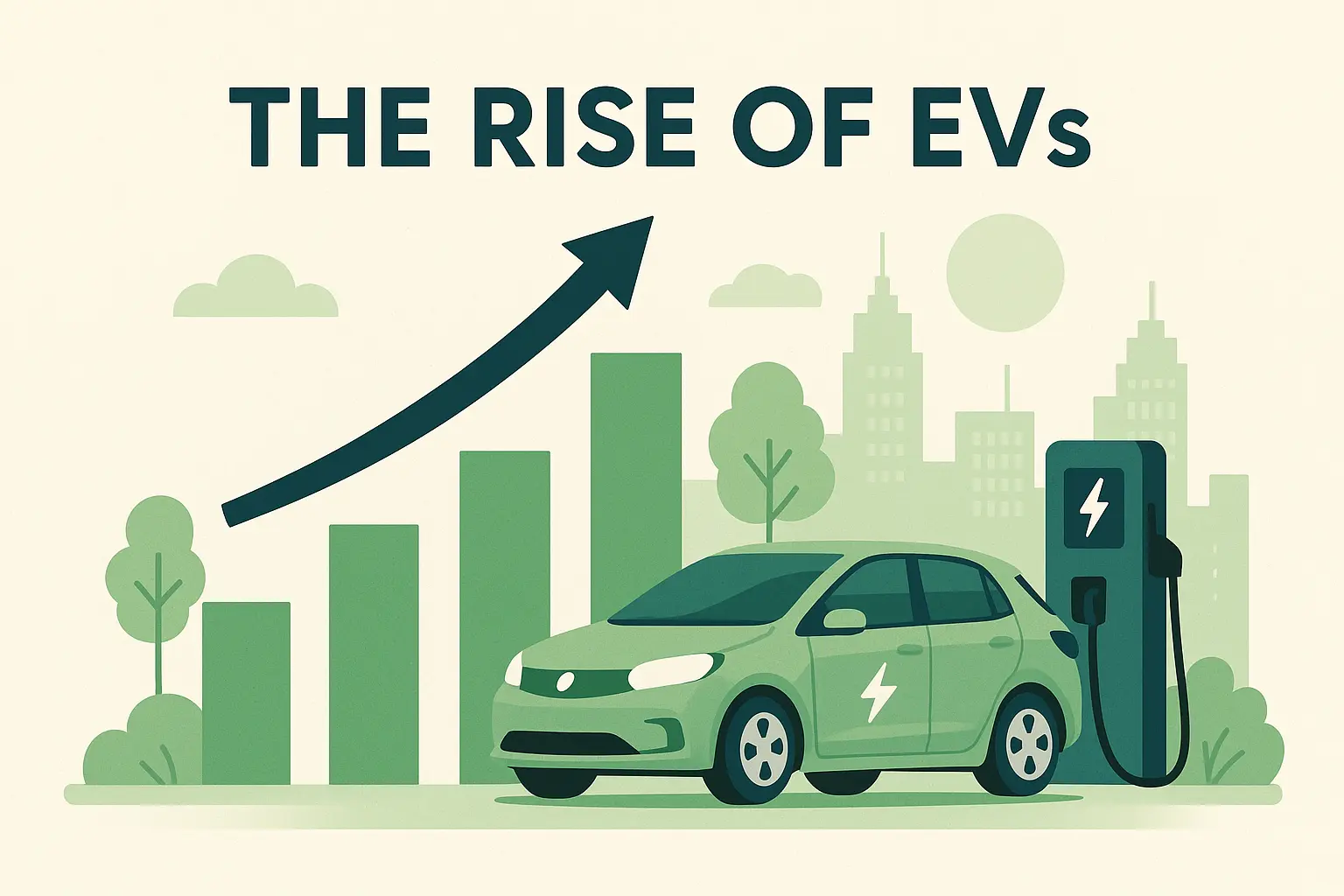By 2030, half of all new cars sold globally could be electric. Once a futuristic concept, it is fast becoming a reality. In the 21st century, B2B and private transport were not just trends but the next chapter in mobility.
The article will outline the significance of EVs, the factors making EVs the smarter option, navigating through the ramp-up period from gas to electric, and the outlook for a technology that has proven to be disruptive.
Why Do EVs Matter?
The transition to electric vehicles is about keeping the human race alive. Transportation accounts for roughly one-quarter of carbon emissions; EVs offer the most scalable reduction of that carbon footprint.
Governments from around the world are setting ambitious targets to phase out ICE vehicles-from the U.S., the EU, to China. Incentives, mandates, and innovations drive the adoption of vehicles progressing from the consumer to the fleet environment.
But the story of the EVs goes beyond just sustainability. The very emergence of these vehicles forces us to reconsider the very interface between us and vehicles-from refueling to maintenance to performance.
Key Benefits of Electric Vehicles
- Lower Running Costs
EVs cost a lot less to operate when compared to gasoline vehicles. Even charging it can be 70-80% cheaper in comparison to refueling, and maintenance is cheaper due to fewer moving parts.
- Zero Tailpipe Emissions
They don’t have any direct emissions, hence ensuring better air quality and the reduction of respiratory diseases-especially in urban centers.
- Amazing Performance
With almost supercar-level acceleration, thanks to instant torque and sophisticated powertrains, modern EVs such as the Tesla Model S Plaid or Lucid Air are remarkable.
- Tax Incentives and Rebates
Buyers in the United States may be qualified to receive federal tax credits up to $7,500, with a few state incentives for states like California and New York. Similar benefits are offered in Europe and Asia.
How to Make the Switch to an EV: A Practical Guide
Step 1: Assess Your Needs
- Are you just commuting? Look at something small, Chevy Bolt, Nissan Leaf…
- Family car? SUVs like the Hyundai Ioniq 5 or Kia EV6.
- Luxury? Long range? Let’s check Tesla Model Y, BMW i4, or Mercedes EQE.
Step 2: Set up charging infrastructure
If you can, install your Level 2 home charger. Public charging networks like Electrify America, Tesla Superchargers, and ChargePoint are rapidly expanding; however, there is nothing more convenient than charging at home daily.
Step 3: Calculate Total Cost of Ownership
Include in your calculations:
- Purchase price minus incentives
- Charging to gas
- Maintenance (no oil changes, fewer brake jobs)
- Insurance (rates may vary)
Try out Edmunds’ EV Cost Calculator for your comparisons.
Real-World Example: Fleet Electrification
Amazon has pledged to deploy 100,000 custom-built Rivian electric delivery vans by 2030. The vehicles are already being deployed in select cities, slashing emissions related to last-mile logistics.
Not only is the move environmentally friendly, but it is also a smart financial decision: lower fuel and maintenance costs drastically reduce the total costs of running a fleet in the long run.
Tips for New EV Owners
- Oil change: Using the apps provided, preheat or precondition your battery in cold conditions so that your battery range is optimized for the drive.
- Planning Your Road Trips: A Better Route Planner (ABRP) is a popular app where you can plan your charging stops.
- Joining local EV groups or forums for insights and updates on infrastructure, incentives, and services.
Common Mistakes to Avoid
- Underestimating Range Needs: Don’t buy the shortest-range EV unless your driving is very predictable.
- Ignoring Charging Speeds: Not all EVs charge at the same rate. Consider the peak charging rate when comparing models.
- Not Going for Test Drives: While EVs drive differently from gasoline vehicles, it is worth trying a few models before settling on one.
What Comes Next
- Solid-State Batteries
Expected to start appearing in vehicles in 2026, or even earlier, solid-state batteries promise that they can be fast charging, have a long life, and be very safe.
- Vehicle-to-Grid Technology
EVs could potentially power homes or balance out the electric grid, with companies such as Ford and Hyundai already testing this.
- Affordable EVs
Expect a flood of cheap EVs sub-$30,000 in the coming years, as battery prices continue to fall and mass production scales.
- Global Electrification
Emerging markets in Southeast Asia, South America, and Africa are fertile grounds for cheap EV adoption, where two- and three-wheel models gain more traction.
Conclusion: The Road Ahead Is Electric
EVs are not just another trend and are there instead for transition purposes. Due to better technology, expanded infrastructure, and reduced prices, it has become more feasible, economical, and essential to own an EV.
Thinking of making the switch? The time is now. Find models that suit you, claim those government incentives, and get familiar with your charging network. Subscribe to our newsletter for more expert insights and EV stories, and begin traveling toward a cleaner and smarter way of driving.



